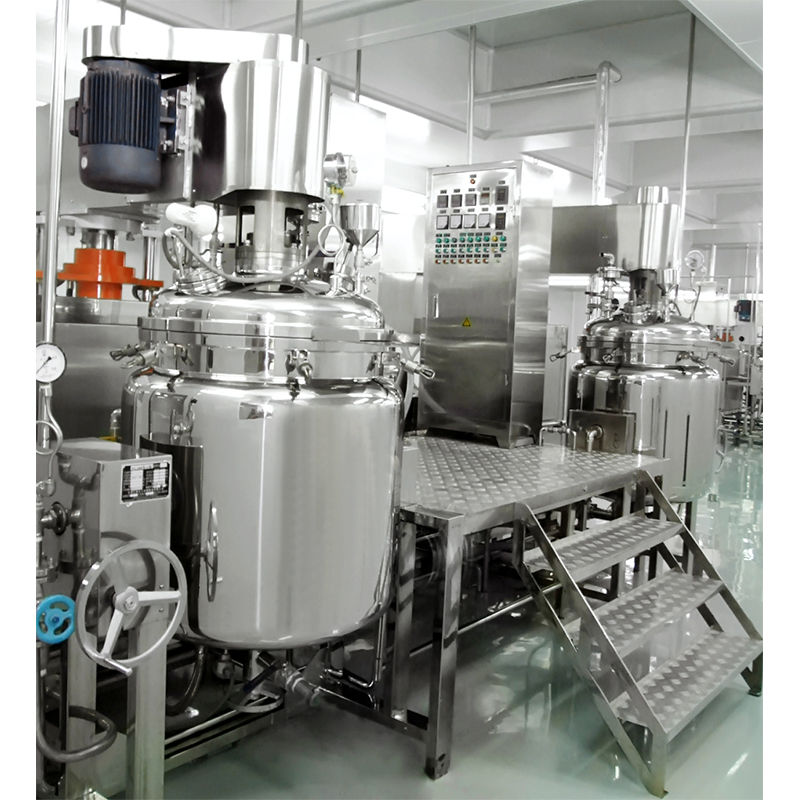As a widely used equipment in the food, chemical, pharmaceutical and other industries, emulsifiers are mainly used for fine mixing and emulsification of liquid liquid or solid-liquid materials to obtain stable and uniform emulsions. Due to the involvement of high-speed rotation, high pressure, and possible high-temperature operations during its operation, ensuring the safe operation of the emulsifier is crucial. The following is a summary by Jinzong Enterprise, a manufacturer and designer of emulsifying machines, on some key safety operation and maintenance knowledge, hoping to help everyone ensure production safety and product quality.

1. Inspection before Operation
Electrical Inspection: Confirm that the power supply voltage matches the rated voltage of the emulsifier, check for any damage to the circuit, and ensure good grounding.
Mechanical Inspection: Check if the agitator, blades, and other components are securely installed and free from looseness or damage. Ensure that all protective covers are installed in place.
Cleaning Inspection: Before use, ensure that the interior of the container and mixing components are clean and free of foreign objects to prevent damage or contamination of the product during startup.
2. Safety Operating Procedures
Wear Personal Protective Equipment:
Operators should wear safety helmets, protective goggles, dust masks, and protective clothing to avoid accidental injuries.
Start Sequence:
Start the circulating cooling system (if equipped) first, then start the motor and gradually increase the speed to the desired set value. Pay attention to the operation status of the equipment and listen for any abnormal sounds.
Avoid Overload Operation:
Strictly follow the maximum processing capacity specified in the equipment manual to avoid motor burnout or mechanical damage caused by overload.
Temperature Monitoring:
For emulsification processes that require heating, closely monitor and control the temperature to avoid local overheating and safety accidents.
3. Maintenance
Regular Inspection: Regularly inspect the wear of vulnerable components such as motors, bearings, and seals, and replace severely worn components in a timely manner.
Lubrication Maintenance:
lubricate rotating parts according to the manufacturer's recommended lubrication cycle to reduce the heat generated by wear and friction.
Cleaning Maintenance: Thoroughly clean the equipment after each use to prevent material residue from causing corrosion or contamination of the next batch of products.
Electrical Maintenance: Regularly inspect the electrical control system to ensure that the wiring is tight and there are no exposed wires to prevent leakage accidents.
4. Emergency Response
Emergency Stop:
There should be a clear emergency stop button on the equipment. Once any abnormalities are found, press the stop button immediately.
Leakage Handling: In case of material leakage, the power should be immediately cut off and appropriate protective equipment should be used to clean up the leaked material to prevent environmental pollution or personal injury.
Fire Response: Sufficient fire-fighting equipment, such as fire extinguishers, should be equipped on site, and employees should be regularly trained to master basic fire emergency response knowledge.
Conclusion
The safe operation of emulsifying machines is not only related to production efficiency and product quality, but also directly affects the personal safety of operators and environmental protection. Therefore, strict adherence to operating procedures, regular equipment maintenance, and effective emergency preparedness are the key to ensuring the safe and efficient operation of the emulsifier. Through comprehensive management, safety hazards can be minimized to the greatest extent and production can be promoted smoothly.
|
联系我们
全国服务热线 肇庆一分厂:广东省肇庆高新区(大旺)康泰街3号 肇庆二分厂:广东省肇庆高新区(大旺)建设路36号 E-mail: jinzong@jinzong.com.cn
|


